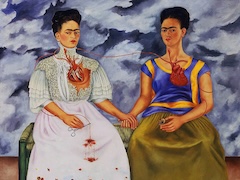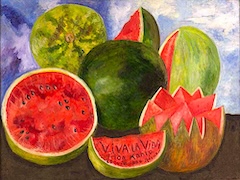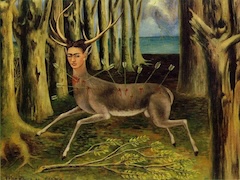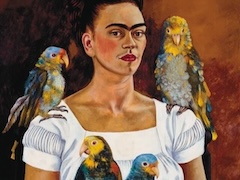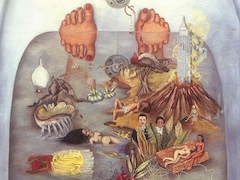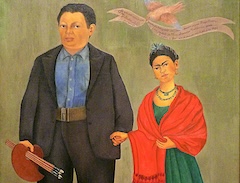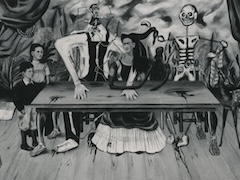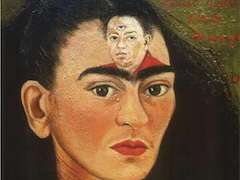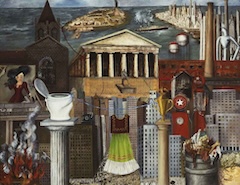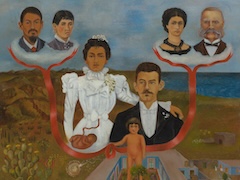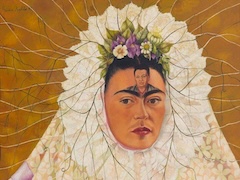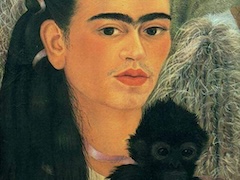The Wounded Table, 1940 by Frida Kahlo
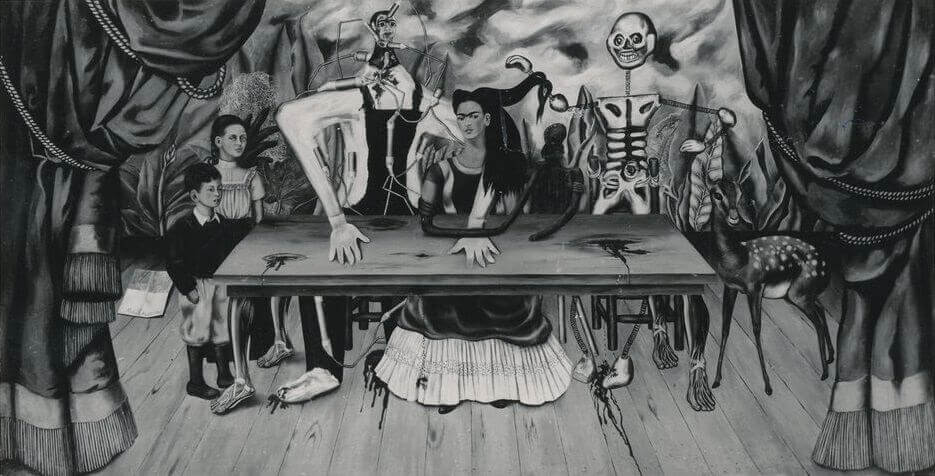
The Wounded Table, a holy grail for Kahlo scholars, went missing after the artist donated it to the former Soviet Union. This self-portrait was painted during the end of 1939 to the beginning of 1940. In December of 1939, Frida Kahlo and Diego Rivera's divorce became final. Frida started working on this painting as an expression of her despair and loneliness. The blood is dripping in the Wounded Table, 1940 as it was dripping on Frida's Tehuana skirt in The Two Fridas. This is her only other large painting, not only by size, but also by the complexity. In a letter to Muray she described she was "working like hell" to finish it to meet the deadline of January 17 for the opening of the "International Exhibition of Surrealism", in which the Wounded Table was displayed with other elite Surrealism artists' masterpieces, e.g. Persistence of Memory by Salvador Dali, and The Treachery of Images by Rene Magritte.
In this painting, the table has human legs and its surface is bleeding on the few knots. This table is a symbol of Frida's sense of broken family from the divorce. There are several objects around the table. In the center was Frida herself, surrounded by all the objects who accompanies her. On one side is her sister Cristina's two children, which is a reflection of her desire to have her own children. On the other side is a deer, one of her favorite pet and she use that as her surrogate children. Sitting right next to her is a Nayarit figure. The tall Judas figure is considered as Diego Rivera, who plays the role of the betrayal. Looking back on the divorce, Rivera admitted his wrong-doing:
I simply wanted to be free to carry on with any woman who caught my fancy... was I simply the depraved victim of my own appetites?"
These characters are arranged in the scene that recalls The Last Supper by Leonardo da Vinci.
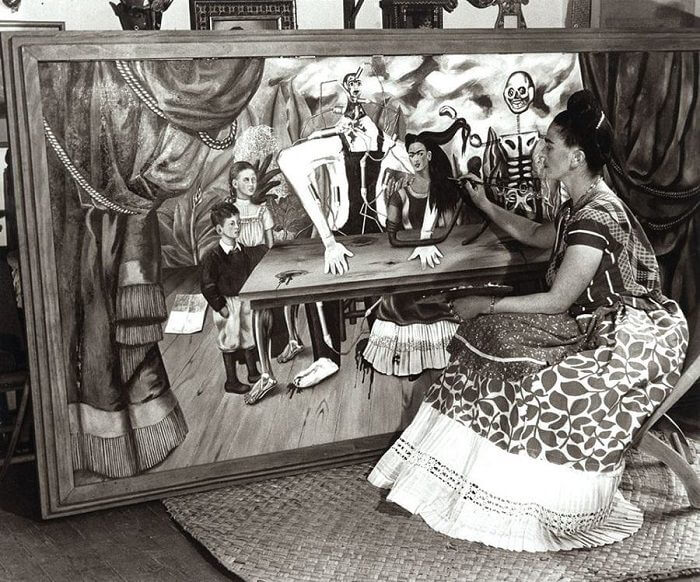
Inspired by a Nayarit sculpture of an embracing couple (now in the Frida Kahlo Museum), Frida elongated the arm of the idol that sits on her left. And, perhaps to emphasize her link with pre-Columbian culture, she made the idol's arm continuous with her own. The clay skeleton, with its pelvic bone tied to a chair to keep it upright, lifts a lock of her long hair in the coiled spring that forms his forearm. He seems intimately linked with Frida, as well." Indeed, all three Mexican artifacts are probably aspects of Frida, for the idol has peg legs, and the skeleton and the Judas have broken and bloodied right feet.
Frida's use of the drapes in this picture invoked a device that had been employed by a number of the Old Masters as a trompe-l'oeil way of drawing the viewer into the composition, pointing to the artifice of the scene, and also showcasing their own ability to paint something as lifelike as the drapery hanging in front of a picture; this was the case, for example, in The Art of Painting by Johannes Vermeer, and Danae by Rembrandt.
The Wounded Table was last exhibited in Warsaw in 1955, after which it disappeared, and is the subject of an ongoing international search.

